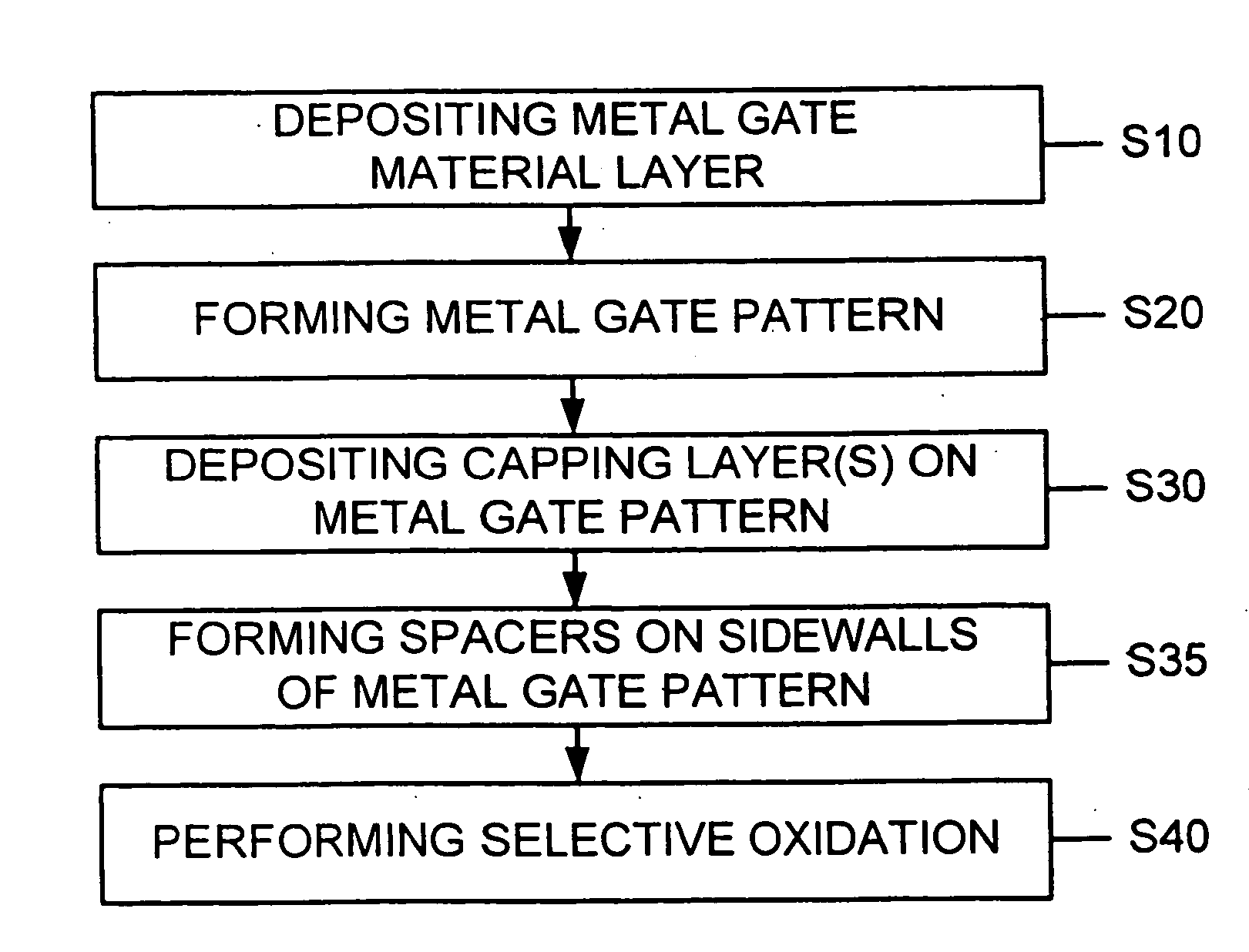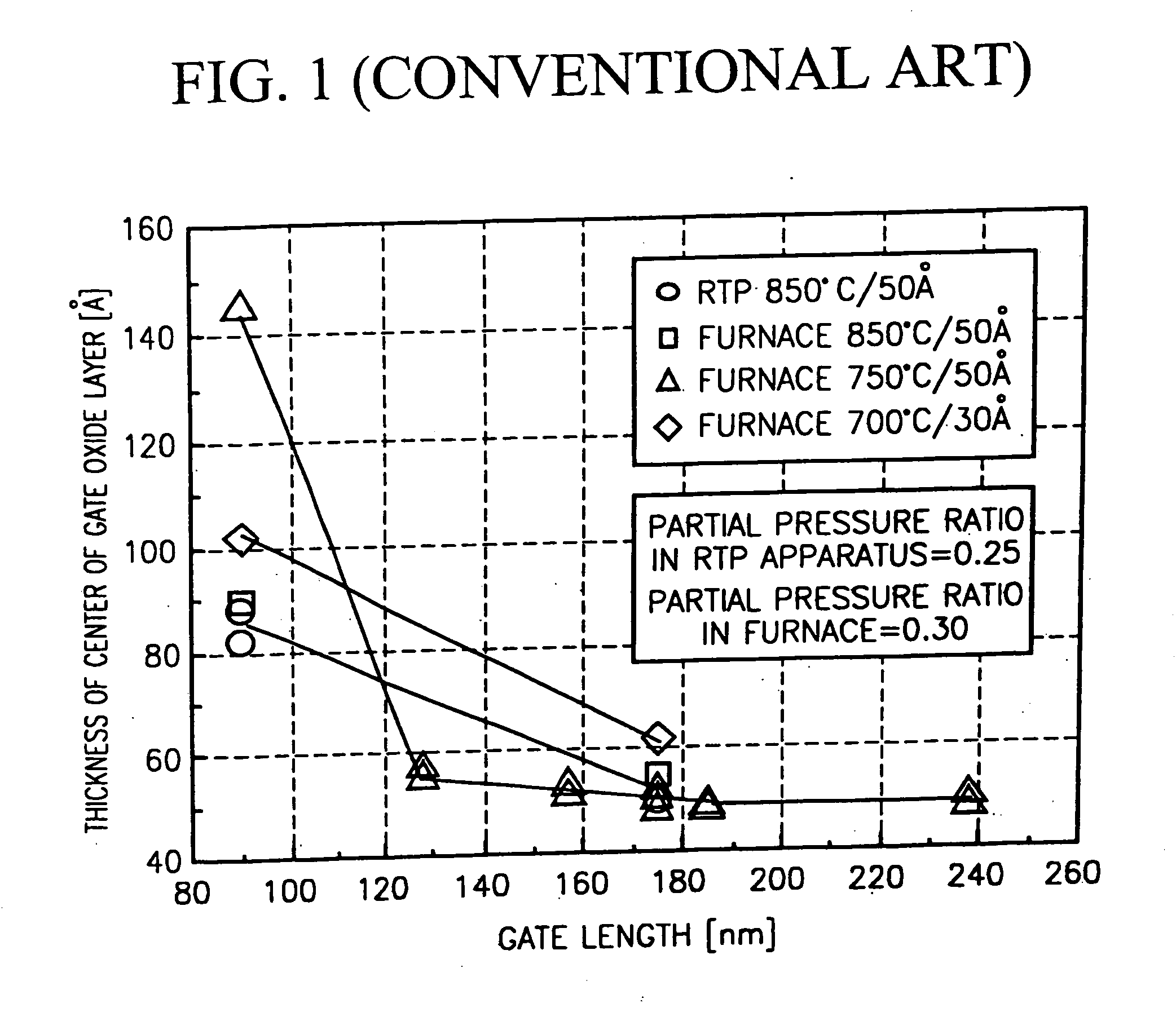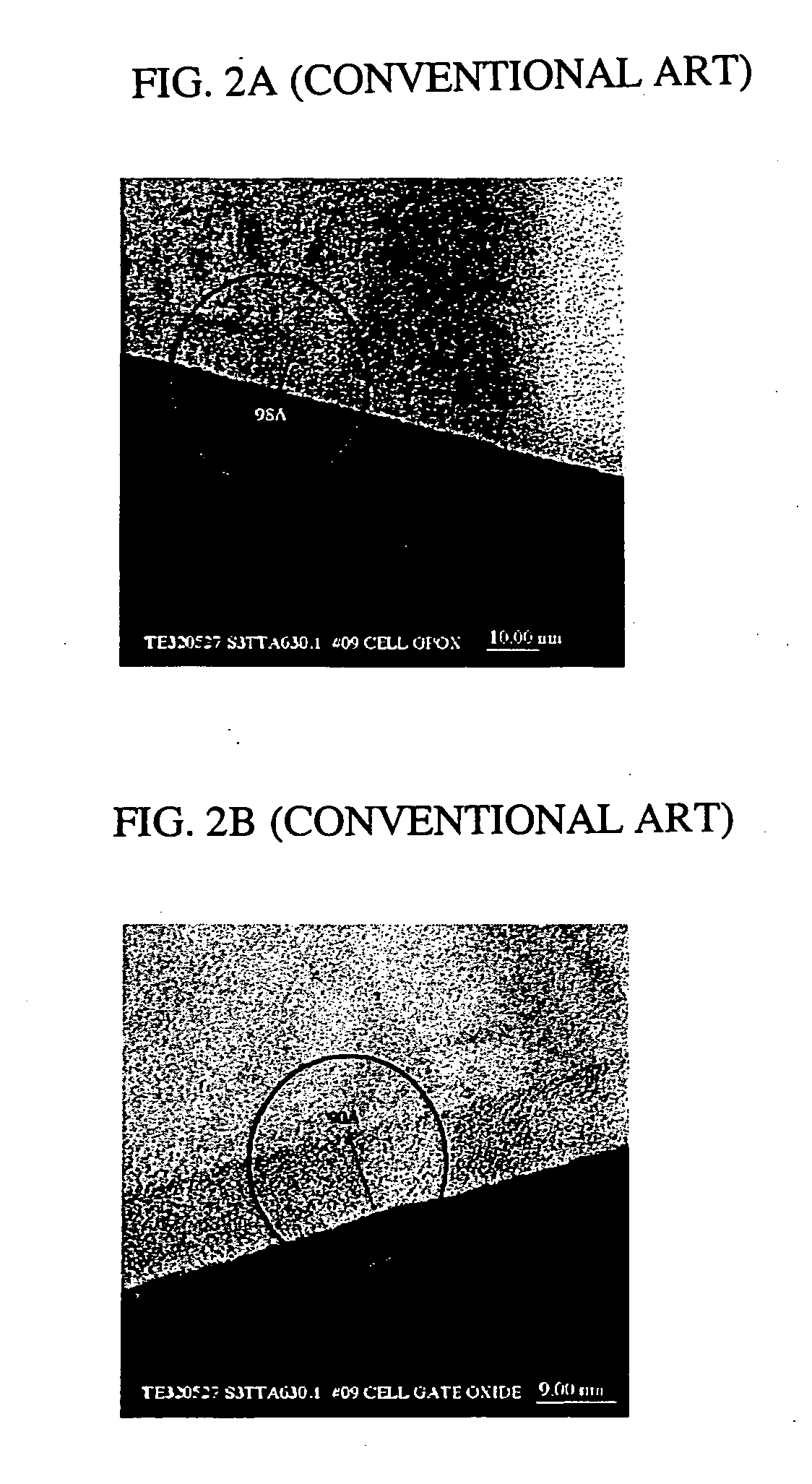Methods of fabricating a semiconductor device having a metal gate pattern
a metal gate and metal gate technology, applied in semiconductor devices, semiconductor/solid-state device details, electrical devices, etc., can solve the problems of damage to the exposed surface of silicon layer and the edges of metal gate layer, and achieve the effect of suppressing diffusion of oxidants
- Summary
- Abstract
- Description
- Claims
- Application Information
AI Technical Summary
Benefits of technology
Problems solved by technology
Method used
Image
Examples
Embodiment Construction
[0042] Exemplary embodiments of the present invention will now be described more fully with reference to the accompanying drawings, in which exemplary embodiments of the invention are shown. This invention may, however, be embodied in many different forms and should not be construed as being limited to the exemplary embodiments set forth herein. Rather, these exemplary embodiments are provided so that this disclosure is thorough and complete and fully conveys the concept of the invention to those skilled in the art. In the drawings, the shape of the elements may be exaggerated for clarity, and the same reference numerals in different drawings represent the same elements.
[0043] Further, it will be understood that when a layer is referred to as being “on” another layer or substrate, it can be located directly on the other layer or substrate, or intervening layers may also be present. It will also be understood that when a layer is referred to as being “directly on” another layer or s...
PUM
 Login to View More
Login to View More Abstract
Description
Claims
Application Information
 Login to View More
Login to View More - R&D
- Intellectual Property
- Life Sciences
- Materials
- Tech Scout
- Unparalleled Data Quality
- Higher Quality Content
- 60% Fewer Hallucinations
Browse by: Latest US Patents, China's latest patents, Technical Efficacy Thesaurus, Application Domain, Technology Topic, Popular Technical Reports.
© 2025 PatSnap. All rights reserved.Legal|Privacy policy|Modern Slavery Act Transparency Statement|Sitemap|About US| Contact US: help@patsnap.com



